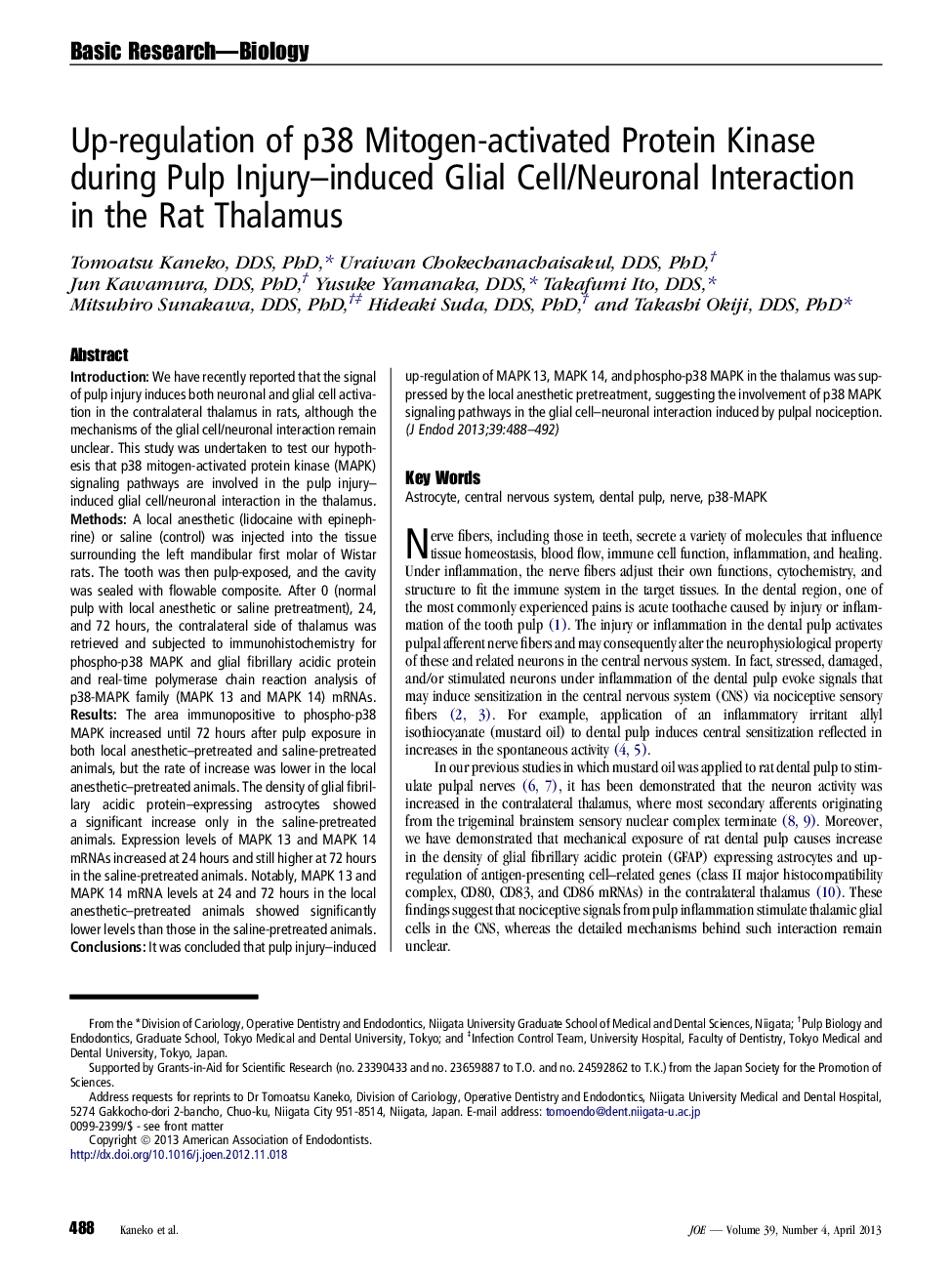| Article ID | Journal | Published Year | Pages | File Type |
|---|---|---|---|---|
| 3148344 | Journal of Endodontics | 2013 | 5 Pages |
IntroductionWe have recently reported that the signal of pulp injury induces both neuronal and glial cell activation in the contralateral thalamus in rats, although the mechanisms of the glial cell/neuronal interaction remain unclear. This study was undertaken to test our hypothesis that p38 mitogen-activated protein kinase (MAPK) signaling pathways are involved in the pulp injury–induced glial cell/neuronal interaction in the thalamus.MethodsA local anesthetic (lidocaine with epinephrine) or saline (control) was injected into the tissue surrounding the left mandibular first molar of Wistar rats. The tooth was then pulp-exposed, and the cavity was sealed with flowable composite. After 0 (normal pulp with local anesthetic or saline pretreatment), 24, and 72 hours, the contralateral side of thalamus was retrieved and subjected to immunohistochemistry for phospho-p38 MAPK and glial fibrillary acidic protein and real-time polymerase chain reaction analysis of p38-MAPK family (MAPK 13 and MAPK 14) mRNAs.ResultsThe area immunopositive to phospho-p38 MAPK increased until 72 hours after pulp exposure in both local anesthetic–pretreated and saline-pretreated animals, but the rate of increase was lower in the local anesthetic–pretreated animals. The density of glial fibrillary acidic protein–expressing astrocytes showed a significant increase only in the saline-pretreated animals. Expression levels of MAPK 13 and MAPK 14 mRNAs increased at 24 hours and still higher at 72 hours in the saline-pretreated animals. Notably, MAPK 13 and MAPK 14 mRNA levels at 24 and 72 hours in the local anesthetic–pretreated animals showed significantly lower levels than those in the saline-pretreated animals.ConclusionsIt was concluded that pulp injury–induced up-regulation of MAPK 13, MAPK 14, and phospho-p38 MAPK in the thalamus was suppressed by the local anesthetic pretreatment, suggesting the involvement of p38 MAPK signaling pathways in the glial cell–neuronal interaction induced by pulpal nociception.
